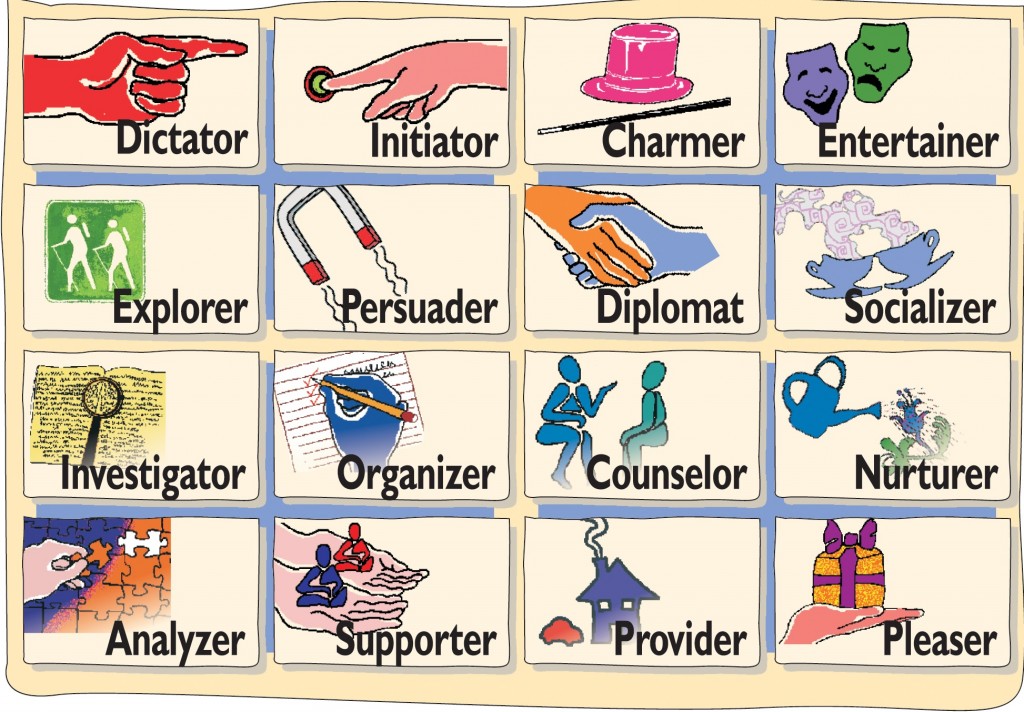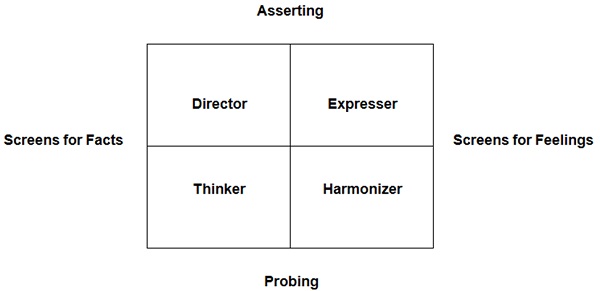
Zeroing In On Your Own Communication Style
“A wonderful fact to reflect upon, that every human creature is constituted to be that profound secret and mystery to every other.” – Charles Dickens, A Tale of Two Cities
Understanding your style of communicating would be relatively easy if you limited yourself to one of the four basic styles.
However, depending on the situation, you may alternate between one, two, or even three styles. It’s like walking. You naturally walk at a certain pace. But then you shift gears to match the pace of someone next to you.
It’s the same with communicating. People prefer to use one style. Our “primary style” is the one we’re most comfortable with. But we also have a backup style.
Typically, this second style is dictated by our situation — the demands of our particular job if at work, the demands of domestic life if at home. We refer to the backup style as our “secondary style.”
Most people vacillate frequently between their primary and secondary styles.
As a result, our overall or specific style becomes a combination of these two styles. It’s like mixing lemon into tea: The concoction has a flavor all its own.
What’s your style? Take the free Straight Talk survey to find out. You’ll see where you are on the Matrix. The Matrix is a very helpful tool because it lets you see the relationship between all sixteen styles at a glance.
You can see how the styles at the top of the Matrix are the most assertive, while those at the bottom are the least so. How those on the left side are most analytical, while those on the right are the most intuitive.
- Directors: Filter for facts and respond assertively.
- Expressers: Filter for feelings and respond assertively.
- Thinkers: Filter for facts and respond by probing.
- Harmonizers: Filter for feelings and respond by probing.
This is not to say that the only thing that distinguishes Directors from Expressers is that one filters for facts and the other for feelings. The behaviors of each style are more complex than that. But certain behaviors are “markers” for each style, and these markers can help us identify a person’s style.
A marker is simply a specific behavior we look for in another person – and ourselves.
- One marker would be sensitivity to people’s feelings.
- A second marker is how often someone cites specific facts.
- A third marker is one’s level of assertiveness.
- And a fourth marker is the extent to which one probes and inquires.
Each marker is a clue to help you determine a person’s style. Understanding these markers is the first step to interpreting the styles of people around you.
As you begin to familiarize yourself with each style, certain themes begin to emerge about What Constitutes a Competent Communicator:
- The importance of asking good questions.
- The need to assert one’s own beliefs and feelings clearly and honestly.
- The importance of getting all the facts before you draw conclusions.
- The need to distinguish between asking pertinent questions and conducting a self-serving interrogation.
- The value of active listening — paraphrasing what another person says to confirm your understand of the situation.
Once you start to appreciate the full spectrum of styles, you can also begin fitting your colleagues and friends into the Matrix. You can start to appreciate the dynamic shifts between communication styles.
 One time I was teaching a seminar of twelve MBA students. In my introduction, I told them that “we each have a style, and each style has its strengths and weaknesses.” I went on to say that “being conscious of those strengths and weaknesses will be useful to you as managers.”
One time I was teaching a seminar of twelve MBA students. In my introduction, I told them that “we each have a style, and each style has its strengths and weaknesses.” I went on to say that “being conscious of those strengths and weaknesses will be useful to you as managers.”
One of the students raised his hand and said he didn’t see the value of this information. “You’re saying that we need to be conscious of our behavior. But what if we simply can’t do that? I don’t want to be aware all the time of what I’m saying or doing.”
“It’s true that there are different levels of self-awareness,” I said. “But right now you’re asking a question about your level of awareness. Do you see that you have to be somewhat self-aware to ask that?”
“Yes,” he admitted. “But I still don’t see how the information can be particularly useful.”
“It’s no different from math class,” I said. “You learn from your mistakes there. This can help you identify your mistakes – so you can train yourself to behave differently the next time.”
“I still don’t get it,” he said. “You’re asking me to change my behavior.”
I asked him his style.
“Initiator,” he said.
“What do you remember about Initiators?”
“They leap to conclusions before they’ve gathered all the data,” he said. “They need to be more open to understanding other points of view.”
Then he paused.
“Oh I think I get it now.”
| Lesson 22: Straight Talk® to Balance “AQ” and “EQ” | Lesson 24: It All Starts With Communication Styles |
3 Comments
Add yours+ Leave a Comment
You must be logged in to post a comment.







[…] Next: Zeroing In On Your Own Communication Style […]
[…] Previous: Zeroing In On Your Style […]
[…] Previous: Zeroing In On Your Own Communication Style […]